Cut Halo: Reach vehicles
From Halopedia, the Halo wiki
This article is part of a series on
Halo: Reach cut content
- Cut content
- Development
To check out cut content for other Halo games, see here!
During the production of Halo: Reach, several vehicles were concepted and implemented - though ultimately cut for various reasons.
Human vehicles[edit]
Armoured personnel carrier[edit]
One vehicle intended for inclusion in Reach was an armoured personnel carrier (APC), with various files and concepts alternately labelling it the "Wolverine" and "Kodiak". An early model of the APC was recovered by the Digsite project as an "APC Mobile Station" in the files for the cut map Farm, consisting of a very basic blockout with no textures, UVs, or weapons. The model recovered has a turret ring and cupola identically sized to support the M247T machine gun and M512 SBHV cannon from the Scorpion tank, and as such was restored to functionality by the Digsite team as a playable vehicle. Due to the extremely early nature of Farm - essentially built in the Halo 3 engine - the vehicle was restored to functionality in Halo 3. However, one intended part of the Reach design was the inclusion of lockdown bracings on the vehicle; functionality for this is retained in the Reach engine but not the Halo 3 engine, meaning that Digsite's restoration of the vehicle does not include this feature. The early design appears to have been based on real-world vehicles like the French AMX-10 RC and American mobile gun system, despite its in-game name referring to it as a personnel carrier.[1]
Later concept art by Isaac Hannaford showcases an evolution of the blockout model's rather simplistic design into a design more consistent with Halo's visual style, notably bearing an extremely heavy resemblance to the M577 APC from the film Aliens - one of many inspirations taken from the Alien franchise as a whole. In Hannaford's concepts, the vehicle gets renamed from Wolverine to Kodiak in the later illustrations' filenames, and is shown bearing a number of various artillery and cannon mount options.[2]
The Kodiak was prototyped in-engine in some form[3], with code referencing the Wolverine as a vehicle physics model remaining in the files of Reach.[Note 1] The vehicle operates in a similar manner to other human vehicles such as the Warthog and Mongoose, though has an additional deployed state. A model for the Kodiak was later recovered and restored for in-game use by the Digsite asset recovery project; the vehicle has a lockdown similar to the Kodiak SPG from Halo Wars 2, which is used to deploy the turret on the back. The model as-present only exists in a low-poly, untextured state.[4]
The release of Halo Wars in 2009 saw the introduction of the M9 Wolverine - an anti-air tank employed by the UNSC. It is likely that this spurred the change of the APC's name from Wolverine to Kodiak. The release of Halo Wars 2 in 2017 saw the introduction of the M400 Kodiak - a self-propelled artillery vehicle bearing little resemblance to the planned Reach vehicle. Halo Wars 2 also introduced two new APCs; the M650 Mastodon and M88 Bison, both heavily visually inspired by the Reach APC's concept design.
Drone[edit]
Referred to in game files for the Halo: Reach Alpha as a "drone", this vehicle utilises a similar flight model to the final game's Sabre fighter.[5] The fighter handles similarly and employs the same autocannons as the Sabre for its primary weapon.[6]
The visual appearance and name of the craft are seemingly inspired by the F-99 Wombat UCAV previously featured in Halo 3: ODST, though the use of a flight model and visual design similar to that of the Sabre indicate it may have been an early version of the Sabre.
The "drone" on Forge World.
Pegasus[edit]
Early in the development process, some revisions of the FSS-1000 Sabre were mocked up by Isaac Hannaford in 3D for implementation in-game. This early version was ultimately scrapped as this initial pass did not have a strong enough visual silhouette from the player camera perspective.[7] At this stage in development, the fighter had the nickname of "Pegasus", and went through numerous concept revisions.[4] The fighter was eventully made canon in a Canon Fodder as the S-930 Strike Fighter.[8]
A sketch of the scrapped Halo 2 "Strike Fighter," the Sabre's conceptual precursor.
An early concept of the Sabre for Halo Reach.
Achievement art for the I'm Sorry, Dave achievement, showing this Sabre revision in concept.
Motorboat[edit]
Once notable vehicle heavily prototyped in-engine was a UNSC watercraft, a small attack boat capable of seating a driver, a passenger and a gunner on an M41 Vulcan - akin to the Warthog. Early campaign level layouts by Marcus Lehto indicated an intent for the fourth level of the game to be a "covert SEAL-esque boat attack at night", with the goal of sinking a ship.[9]
The boat was conceived by Isaac Hannaford[10][11], and prototyped extensively in-engine resulting in the development of water-wake technology later re-used for the jet-wash effects on the jetpack.[12] Ultimately, the boat was cut entirely, though the boat's removal was credited in allowing the level New Alexandria to be fully-developed and make it into the final game.[13] A small amount of footage of the boat prototype was later shown at PAX 2010 in a demo reel of cut content; showcasing the boat riding on the waves and driven in a third-person view.[14]
Code for the boat remains in the files of Reach.
The boat being driven in its third-person view. Note the presence of the Halo 3-era Master Chief character model - indicating this was still fairly early in development.[14]
A screenshot of the boat on the water.[14]
A screenshot of the boat on the water.[14]
Covenant vehicles[edit]
Drop pod[edit]
This drop pod was modelled by 3D artist Kayl Myers and implemented in-game, featured only in the Halo: Reach E3 2010 Trailer. The pod was cut from the final game and replaced with the Yado-pattern Intrusion Carapace. This model was later featured (and thus, made canon) in 2017's Halo: Warfleet – An Illustrated Guide to the Spacecraft of Halo as the Suspa Al-pattern Assault Carapace.
Jackal glider[edit]
Referenced only in the game code, the "Jackal glider" was presumably an aerial vehicle designed for the Kig-Yar. The glider's physics model is extremely advanced compared to all other aircraft in-game, containing data fields for wings, tail, rudders and drag among other things.
Scarab[edit]
While the Deutoros-pattern Scarab did ultimately make its way into the final game as a low-poly background entity on the levels Tip of the Spear and The Pillar of Autumn (with the latter level also featuring a more detailed, non-interactive setpiece Scarab at one point in the mission), early ideas for the game's campaign were to have the player character able to drive the Scarab. Early ideas for the level New Alexandria would have seen the player drive the Scarab in the remains of the post-glassing city. Prototypes for the Scarab were made and the physics involved was described by Chris Ophdal as "sweet", though the Scarab was ultimately considered unsustainable - especially with the high engine cost needed to run the level. Ultimately, the drivable Scarab was scrapped and New Alexandria was transformed into an aerial mission focusing on the Falcon instead.[15][16]
Cut dialogue for the missions Tip of the Spear and Exodus shows that early plans for these levels were for both to feature Scarab encounters similar to those featured in Halo 3 and Halo 3: ODST, though all were cut.
Revenant physics model[edit]
While the Rizvum-pattern Revenant was ultimately realised in the final game as a fully-fledged vehicle, an unused physics model present in the game files suggests a different originally-intended role for the vehicle. In the final release, the Revenant utilised the "alien scout" physics model, shared with the Ghost which provides the vehicle with four directions of movement and a front-facing, driver-controlled weapon. The unused Revenant variation in the files acts similarly, though with the exception that the driver-controlled turret has a full 360 degrees of rotation - similar to the turret on the Scorpion tank. It is unknown why this ultimately went unused.
Notably, early concept explorations for the Revenant did explore the idea of giving the Revenant a fully-operational manned turret, akin to the Wuzum-pattern Spectre or the Warthog. Although this design was ultimately unused, the concept was revisited in Halo 4 as the Phelent-pattern Revenant.
Siege engine[edit]
Referred to internally as the "siege engine", little is known of this gargantuan Covenant vehicle's purpose. The vehicle was conceived by Isaac Hannaford, though never progressed past the concept stage.[17] When asked about the vehicle's resemblance to the H-K-Tank from the Terminator franchise, Hannaford responded that there were "no coincidences."[18]
Some concept art for the Tip of the Spear mission indicates that early plans were to have the siege engines be the target of the Battle at Szurdok Ridge. This early concept may also be depicting what would have been mission nine in Lehto's early campaign level layouts; which list a mission with the following objectives;[9]
- Destroy Covenant Supply Convoy
- Evening
- Take out massive hover platforms
The "massive hover platforms" mentioned match the visual depictions of the siege engine.
The siege engine was later canonised in the 2022 edition of the Halo Encyclopedia as the Zashk-pattern Draugr.
An early blockout of the siege engine model.[19]
An early blockout of the siege engine model.[19]
An early blockout of the siege engine model, as viewed in first-person.[20]
Walker[edit]
A two-legged Covenant walker, similar in design to excavators such as the Locust and Scarab, can be seen in a handful of concept pieces by Isaac Hannaford. The design is tall, and in some art pieces can even tower over a Scarab. Hannaford explained his intention with the design as wanting to explore a Covenant walker that could be knocked over by a player driving a Warthog - however, this idea never progressed further than these early concepts.[21]
Halo 3 leftovers[edit]
Code remains in the files for the physics models of several leftover vehicles used and/or cut from the previous game, Halo 3. These include the Chopper, Mantis and Guardian Sentinel (classed internally by the game as a vehicle).
Notes[edit]
- ^ In Halo, vehicles are separated by their physics type with models such as "Human Jeep Type" representing the Warthog, Mongoose and Spade physics or the "Alien Scout Type" representing the Wraith, Ghost and Revenant. The Wolverine APC is its own physics model.
Sources[edit]
- ^ Halo Waypoint, Digsite Deep-Dive (Retrieved on Jun 21, 2024) [archive]
- ^ ArtStation, Armored personnel carrier (Retrieved on Sep 11, 2021) [archive]
- ^ Twitter, Marcus Lehto (@game_fabricator): "I wish we still had some old Reach builds with the Kodiak!" (Retrieved on Oct 25, 2021) [archive]
- ^ Jump up to: a b Halo Waypoint, Digsite Discoveries (Retrieved on Jul 18, 2023) [archive]
- ^ Twitter, Zeddikins (@zeddikins) (Retrieved on Jan 26, 2021) [archive]
- ^ Twitter, Galaxy (@___Gal4xy___): "Here's some footage of the cut Wombat (Drone) from Halo: Reach for those curious." (Retrieved on Feb 10, 2022) [archive]
- ^ ArtStation, Sabre first round: "we mocked this up in 3d and it didn't get the parallax I wanted it to from the players perspective so I decided to redo it and build it myself to ensure my goals for the fighter were met." (Retrieved on Jan 26, 2021) [archive]
- ^ Halo Waypoint, Canon Fodder - Digsite Dissection (Retrieved on Jul 31, 2023) [archive]
- ^ Jump up to: a b Twitter, Marcus Lehto (@game_fabricator): "This was a very early campaign layout I made for Reach. Space combat. But it took brave people like @tipul [Mike Tipul] who made it a reality." (Retrieved on Sep 11, 2021) [archive]
- ^ Isaac Hannaford's Blog, Halo Reach boat and the Pioneer offroad vehicle: "The boat would have been great, and some of the test were promising, but it never quite made it. You should have seen it jump the waves though... Awsome!" (Retrieved on Sep 11, 2021) [archive]
- ^ ArtStation, Assorted Vehicle designs for Halo: REACH (Retrieved on Sep 11, 2021) [archive]
- ^ Twitter, Steve Scott (@stepscot): "The sweet water wake tech we developed for the shelved boat prototype came back as ground-aware jet wash on the jetpack. Working with Baldwin on that feature was a highlight of that development cycle for me" (Retrieved on Sep 11, 2021) [archive]
- ^ Twitter, Sam Arguez (@sam_arguez): "We may have lost the boat, but in doing so we made room for that cool Falcon rooftop mission by @dmiller360 [Dan Miller] . Man, I should go play Reach again..." (Retrieved on Sep 11, 2021) [archive]
- ^ Jump up to: a b c d YouTube - Halo, PAX 2010: Bungie Halo: Reach Panel (Part 3)
- ^ Eurogamer, Tech Interview: Halo: Reach - Page 3 (Retrieved on Sep 11, 2021) [archive]
- ^ Halo: Reach: Legendary Edition developer commentary
- ^ Twitter, Isaac Hannaford (@Isaac_Hannaford): "Covenant siege engine painted over a beautiful piece by Jamie Jones." (Retrieved on Mar 28, 2021) [archive]
- ^ Twitter, Isaac Hannaford (@Isaac_Hannaford): "There are no coincidences :)" (Retrieved on Sep 11, 2021) [archive]
- ^ Jump up to: a b Twitter, Galaxy (@___Gal4xy___): "While going through more BSP's from Halo: Reach, I stumbled upon an early block out version of the mission "Tip Of The Spear", but the thing that took me by surprise was the fact there was a model of the Covenant Siege Engine on the BSP! The Siege Engine has been found!" (Retrieved on Feb 11, 2023) [archive]
- ^ Twitter, Galaxy (@___Gal4xy___): "Damn, the Siege Engine is huge in person!" (Retrieved on Feb 11, 2023) [archive]
- ^ X.com, Isaac Hannaford (@Isaac_Hannaford): "I was thinking about a [Covenant] walker that you could knock over with a warthog. Never went anywhere" (Retrieved on Oct 4, 2024) [archive]
| ||




















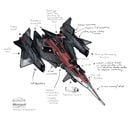






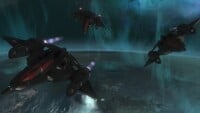



![The boat being driven in its third-person view. Note the presence of the Halo 3-era Master Chief character model - indicating this was still fairly early in development.[14]](https://halo.wiki.gallery/images/thumb/8/88/HR_Boat_Screenshot_3P.png/200px-HR_Boat_Screenshot_3P.png)
![A screenshot of the boat on the water.[14]](https://halo.wiki.gallery/images/thumb/3/3e/HR_Boat_Screenshot_1.png/200px-HR_Boat_Screenshot_1.png)
![A screenshot of the boat on the water.[14]](https://halo.wiki.gallery/images/thumb/f/f4/HR_Boat_Screenshot_2.png/200px-HR_Boat_Screenshot_2.png)





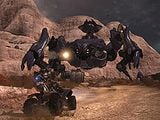


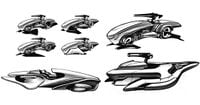
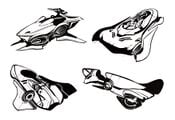






![An early blockout of the siege engine model.[19]](https://halo.wiki.gallery/images/thumb/b/b2/HR_EarlyDraugr_Blockout_Screenshot_1.jpg/152px-HR_EarlyDraugr_Blockout_Screenshot_1.jpg)
![An early blockout of the siege engine model.[19]](https://halo.wiki.gallery/images/thumb/3/37/HR_EarlyDraugr_Blockout_Screenshot_2.jpg/147px-HR_EarlyDraugr_Blockout_Screenshot_2.jpg)
![An early blockout of the siege engine model, as viewed in first-person.[20]](https://halo.wiki.gallery/images/thumb/c/c3/HR_EarlyDraugr_Blockout_Screenshot_3.jpg/200px-HR_EarlyDraugr_Blockout_Screenshot_3.jpg)
